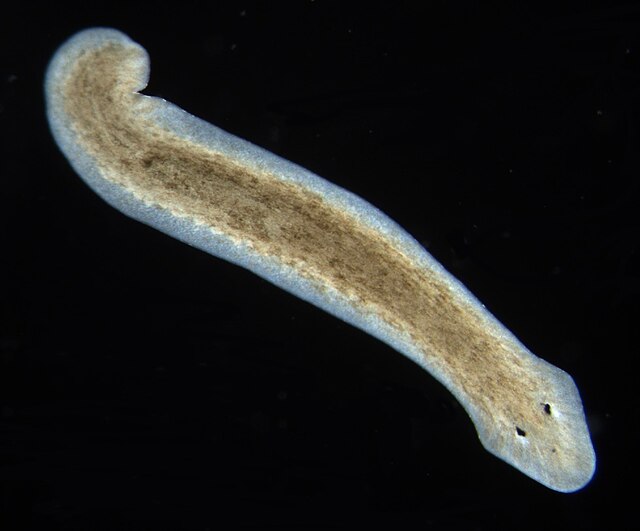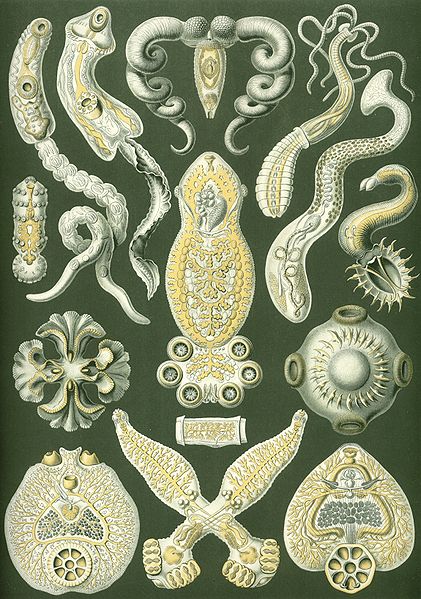Planarians (triclads) are free-living flatworms of the class Turbellaria, order Tricladida, which includes hundreds of species, found in freshwater, marine, and terrestrial habitats. Planarians are characterized by a three-branched intestine, including a single anterior and two posterior branches. Their body is populated by adult stem cells called neoblasts, which planarians use for regenerating missing body parts. Many species are able to regenerate any missing organ, which has made planarians a popular model in research of regeneration and stem cell biology. The genome sequences of several species are available, as are tools for molecular biology analysis.
Planarian
Sabussowia ronaldi, a Maricola.
Polycelis felina, a planariid.
The flatworms, flat worms, Platyhelminthes, or platyhelminths are a phylum of relatively simple bilaterian, unsegmented, soft-bodied invertebrates. Being acoelomates, and having no specialised circulatory and respiratory organs, they are restricted to having flattened shapes that allow oxygen and nutrients to pass through their bodies by diffusion. The digestive cavity has only one opening for both ingestion and egestion ; as a result, the food can not be processed continuously.
Flatworm
Various parasitic flatworms from Haeckel's Kunstformen der Natur (1904)
The turbellarian Pseudoceros dimidiatus
Life cycle of the eucestode Taenia: Inset 5 shows the scolex, which has four Taenia solium, a disk with hooks on the end. Inset 6 shows the tapeworm's whole body, in which the scolex is the tiny, round tip in the top left corner, and a mature proglottid has just detached.







